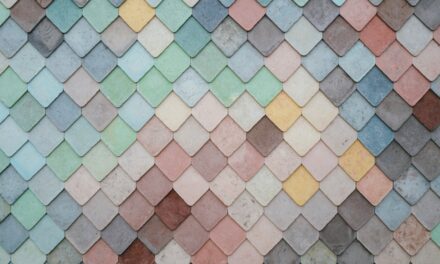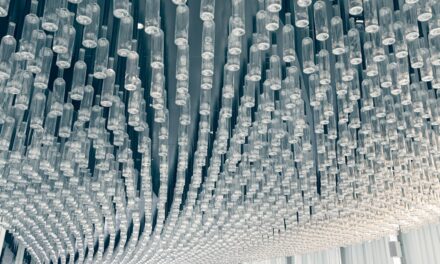Concept art serves as the visual foundation for a multitude of creative projects, ranging from video games and films to animations and illustrations. It is a discipline that marries artistic skill with imaginative thinking, allowing artists to convey ideas and narratives through visual means. The techniques employed in concept art are diverse and multifaceted, encompassing everything from initial sketches to fully realised digital paintings.
Understanding these techniques is essential for any aspiring concept artist, as they provide the tools necessary to communicate complex ideas effectively and efficiently. At its core, concept art is about exploration and iteration. Artists often begin with a vague idea or a brief and then embark on a journey of visual discovery.
This process involves experimenting with various styles, forms, and compositions to find the most compelling representation of the concept at hand. The techniques used in this field are not merely about aesthetics; they also serve a functional purpose, helping to clarify ideas and facilitate collaboration among team members in larger projects. As we delve deeper into the various techniques of concept art, we will uncover the importance of each stage in the creative process, from the initial thumbnails to the final polished piece.
Summary
- Thumbnails are essential for exploring multiple ideas quickly and efficiently in concept art.
- Sketching and roughing out ideas allows for the freedom to experiment and iterate on concepts.
- Refining and developing concepts involves adding depth and detail to bring ideas to life.
- Colour and lighting play a crucial role in setting the mood and enhancing the impact of concept art.
- Adding detail and texture to polished pieces adds a sense of realism and depth to the artwork.
The Importance of Thumbnails in Concept Art
The Freedom to Experiment
This stage is crucial for fostering creativity, as it allows for experimentation and the freedom to make mistakes without the pressure of perfection. The beauty of thumbnails lies in their simplicity; they do not require intricate details or refined techniques. Instead, they focus on capturing the essence of an idea.
Versatility in Mediums
Artists can use various mediums—pencil, ink, or digital tools—to create these small sketches, often working quickly to maintain a sense of spontaneity. Once a selection of thumbnails is created, artists can evaluate which concepts resonate most strongly and warrant further development.
Streamlining the Decision-Making Process
This iterative approach not only enhances creativity but also helps streamline the decision-making process, ensuring that the most promising ideas are pursued further.
Sketching and Roughing Out Ideas
Once a selection of thumbnails has been made, the next step involves sketching and roughing out ideas in greater detail. This stage allows artists to flesh out their concepts, adding more defined shapes and forms while still maintaining a loose and exploratory approach. Sketching serves as a bridge between the initial brainstorming phase and the more refined stages of concept development.
It is during this phase that artists can begin to consider proportions, anatomy, and spatial relationships more seriously. Rough sketches can vary in style and technique, depending on the artist’s preferences and the requirements of the project. Some may choose to work with traditional media such as graphite or charcoal, while others may opt for digital tools that offer flexibility and ease of modification.
Regardless of the medium, the goal remains the same: to create a visual representation that captures the essence of the idea while allowing room for further refinement. This stage is also an opportunity for artists to experiment with different poses, expressions, and environments, ultimately leading to a more comprehensive understanding of their concepts.
Refining and Developing Concepts
With rough sketches in hand, artists can begin the process of refining and developing their concepts into more polished representations. This stage involves critically evaluating each element of the design—considering aspects such as silhouette, colour palette, and overall composition. Refinement is not merely about adding detail; it is about making informed decisions that enhance the clarity and impact of the artwork.
Artists may revisit their thumbnails at this stage to ensure that they remain aligned with their original vision while also incorporating new insights gained during the sketching phase. As concepts evolve, artists often seek feedback from peers or mentors to gain fresh perspectives on their work. Constructive criticism can be invaluable in identifying areas for improvement or suggesting alternative approaches that may not have been considered initially.
This collaborative aspect of concept art fosters a sense of community among artists and encourages growth through shared knowledge and experience. Ultimately, refining concepts is about striking a balance between personal expression and effective communication, ensuring that the final piece resonates with its intended audience.
Using Colour and Lighting to Enhance Concepts
Colour and lighting play pivotal roles in concept art, as they can dramatically alter the mood and atmosphere of a piece. Once a concept has been refined, artists can begin to experiment with colour palettes that evoke specific emotions or themes relevant to their project. Understanding colour theory is essential at this stage; artists must consider how different colours interact with one another and how they can be used to guide the viewer’s eye throughout the composition.
Lighting is equally important in establishing depth and dimension within a piece. By manipulating light sources—whether natural or artificial—artists can create dramatic contrasts that enhance focal points or add an element of intrigue to their work. The interplay between light and shadow can also help define forms and textures, making characters or environments feel more three-dimensional.
As artists incorporate colour and lighting into their concepts, they must remain mindful of how these elements contribute to the overall narrative being conveyed.
Adding Detail and Texture to Polished Pieces
Once colour and lighting have been established, artists can turn their attention to adding detail and texture to their polished pieces. This stage is where the artwork truly comes to life; intricate details can elevate a concept from a mere idea to a fully realised visual experience. Artists may employ various techniques—such as layering brush strokes or using texture brushes—to create depth and richness within their work.
Attention to detail is crucial in concept art, as it can significantly impact how viewers perceive characters or environments. For instance, adding subtle textures to clothing or surfaces can convey information about materials and wear, enhancing believability within the artwork. Additionally, small details such as facial expressions or environmental elements can contribute to storytelling by hinting at character motivations or situational context.
As artists refine their pieces further, they must strike a balance between detail and clarity; too much detail can overwhelm viewers, while too little may leave concepts feeling flat or incomplete.
Digital Techniques for Concept Art
In recent years, digital techniques have revolutionised the field of concept art, offering artists unprecedented flexibility and efficiency in their workflows. Digital tools allow for rapid experimentation with colours, shapes, and compositions without the constraints often associated with traditional media. Software such as Adobe Photoshop or Procreate provides an array of brushes and effects that enable artists to create stunning visuals with relative ease.
One significant advantage of digital techniques is the ability to work non-destructively; artists can create layers that allow for adjustments without permanently altering previous work. This feature encourages experimentation and iteration, as artists can easily revert to earlier versions or try out new ideas without fear of losing progress. Furthermore, digital art facilitates collaboration among teams by enabling easy sharing of files and feedback through online platforms.
As technology continues to advance, digital techniques will undoubtedly play an increasingly vital role in shaping the future of concept art.
Tips for Creating Compelling Concept Art Pieces
Creating compelling concept art requires not only technical skill but also a deep understanding of storytelling and visual communication. One essential tip for aspiring concept artists is to study various art styles and genres; exposure to different influences can inspire new ideas and approaches while broadening one’s artistic vocabulary. Additionally, observing real-world references—whether through photography or life drawing—can enhance an artist’s ability to depict believable forms and environments.
Another crucial aspect is maintaining an open mind throughout the creative process. Embracing experimentation allows artists to discover unexpected solutions or unique interpretations of their concepts. Seeking feedback from peers or mentors can also provide valuable insights that lead to growth and improvement.
Finally, persistence is key; developing strong concept art skills takes time and dedication. By continually practising techniques and pushing creative boundaries, artists can cultivate their unique voice within this dynamic field. In conclusion, mastering concept art techniques involves a multifaceted approach that encompasses everything from initial brainstorming through refinement to final execution.
By understanding each stage of this process—from thumbnails to polished pieces—artists can effectively communicate their ideas while honing their skills in visual storytelling. Whether working traditionally or digitally, embracing experimentation and seeking feedback will ultimately lead to more compelling concept art that resonates with audiences across various mediums.
If you are interested in learning more about the world of concept art, you may want to check out the article Inspired Creations on Think of Art. This article delves into the creative process behind some of the most innovative and imaginative pieces of art, providing valuable insights for aspiring artists. By exploring different sources of inspiration and techniques, you can further enhance your skills and develop your own unique style. So, be sure to give it a read and let your creativity flourish on the creative canvas of your imagination.
FAQs
What is concept art?
Concept art is a form of illustration used to convey an idea for use in films, video games, animation, or comic books before it is put into the final product. It is a visual representation of a design, idea, or mood for use in the pre-production process.
What are thumbnails in concept art?
Thumbnails are small, quick sketches used to explore different ideas and compositions for a concept. They are a way for artists to quickly generate and explore multiple ideas before moving on to more detailed work.
What is the purpose of creating thumbnails in concept art?
Creating thumbnails allows artists to explore a wide range of ideas and compositions quickly. It helps them to narrow down the best concepts before investing time in creating more detailed artwork.
What are some common techniques used in concept art?
Common techniques used in concept art include sketching, digital painting, rendering, and using various software tools such as Photoshop, Illustrator, and 3D modelling programs.
How do concept artists develop their ideas into polished pieces?
Concept artists develop their ideas into polished pieces by refining their chosen thumbnail sketches, adding more detail, and refining the composition. They may also use colour, lighting, and texture to bring their concepts to life.
What role does concept art play in the creative process?
Concept art plays a crucial role in the creative process by helping to visualise and communicate ideas, designs, and concepts to other members of the production team. It serves as a blueprint for the final product.


